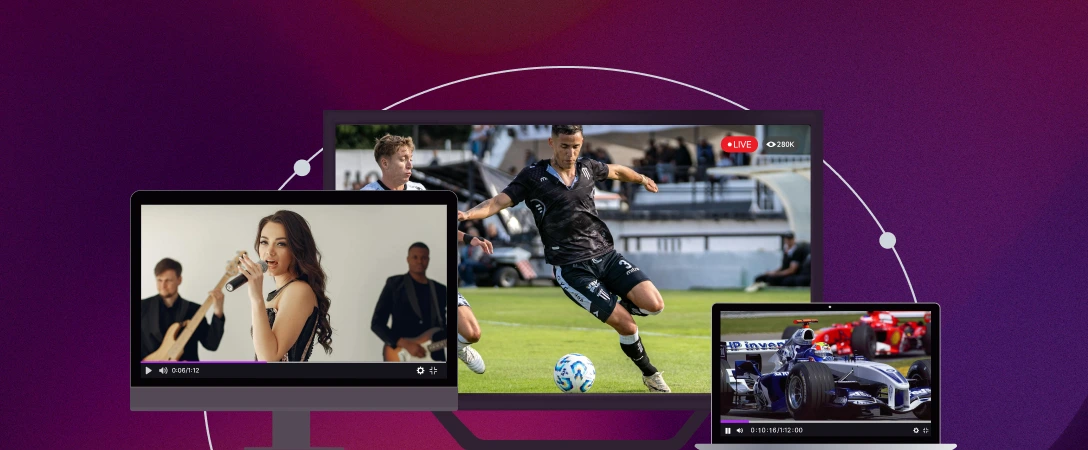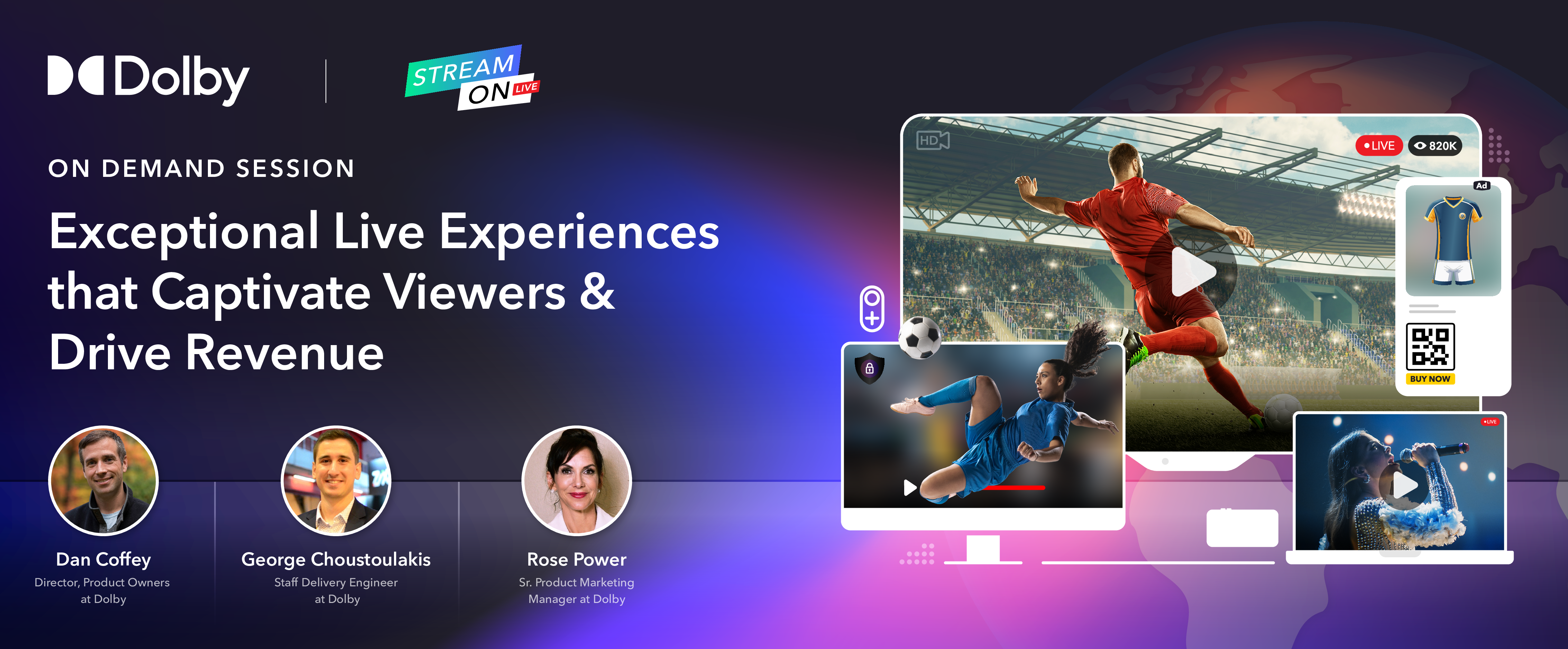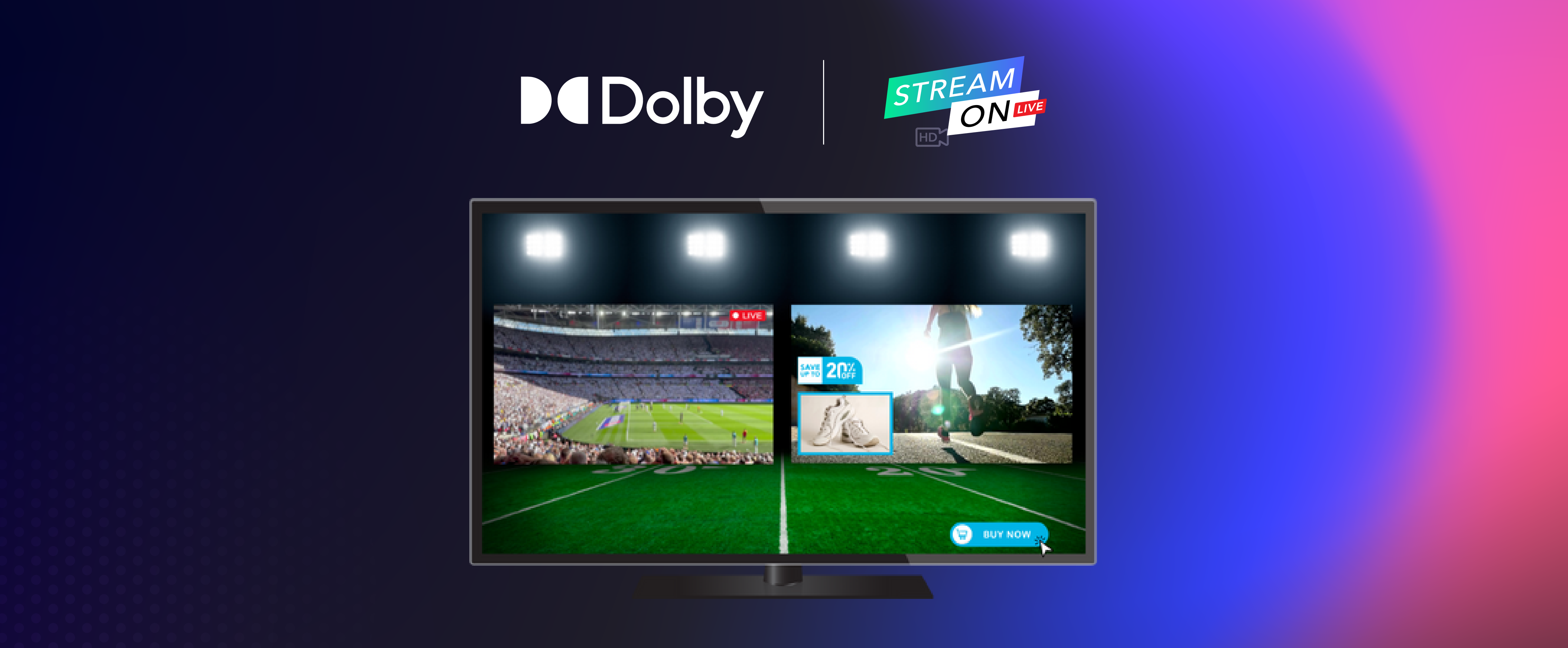There are quite a few methods to consider when creating a monetization strategy for your streaming business. There are many ways to generate revenue from your video content, from advertising to brand sponsorships.
When it comes to advertising, there are several ad-insertion methods to choose from. Two of the most popular methods include client-side ad-insertion and server-side ad-insertion.
In this guide, we compare two popular ad-insertion methods: client-side ad-insertion (CSAI) and server-side ad-insertion (SSAI). We’ll start by providing an overview of each method before we weigh the pros and cons of each. To wrap things up, we will discuss server-guided ad-insertion (SGAI), a revolutionary monetization method that combines both worlds.
What is client-side ad-insertion (CSAI)?
In a client-side ad insertion (CSAI) flow, advertisements are managed and added on the end-user’s device. This means that the broadcaster triggers advertisements on their end.
From the viewer’s perspective, content and ads are separated. The player plays content and advertisements independently of each other and switches between the two as needed.
The CSAI flow is specified via the Interactive Advertising Bureau (IAB) standards:
- VAST: ad metadata
- VMAP: ad timing
- VPAID/SIMID: interactive ads
- OMID: viewability measurements
A compliant player supports all ad solutions that adhere to these standards, making it easier to switch to another provider. CSAI systems with a different flow can be added individually, and alternative implementations like Google IMA can also be added in parallel.
What is server-side ad-insertion (SSAI)?
In a server-side ad-insertion (SSAI) flow, advertisements are directly stitched to the streaming manifest on the server side at the last moment. The content and advertisements are closely related, allowing smoother playback and transitions.
This method is comparable to traditional linear television. The main difference between broadcast advertising and SSAI is that the latter enables advertisements to be targeted towards individual end-users.
SSAI is only partly standardized. However, SCTE-35 markers are a popular technique to signal the encoder and packager where ads can be inserted. It was never intended to be used for streaming clients, so SCTE-35 is often only used to inform SSAI providers where ads should be placed.
How they place those ads and how they provide the relevant metadata for tracking ad progress is not standardised. This metadata is needed to build a CSAI-like experience: showing a click-through and indicating duration and current time. With that in mind, some common strategies include:
- Fetching metadata from the SSAI provider’s backend
- Adding timed cues via ID3/EMSG
- Parsing custom tags from the streaming manifest
- Integrating with a proprietary library
A video player pre-integrated with multiple SSAI vendors improves the interoperability between all of them.
CSAI vs. SSAI: Which is right for you?
Neither CSAI nor SSAI is inherently better than the other. However, one advertising method may be more suitable for your use case than the other.
Some significant deciding factors include cost and profitability, interactivity, and technical differences. Let’s check out how the ad-insertion methods vary based on these considerations.
Cost and profitability
SSAI is more expensive and complex to set up and use than CSAI. This is due to the tighter integration between content and advertisements and the increased complexity overall.
However, the higher cost of SSAI can be easily countered by the fact that it provides a much higher fill rate. Ad blockers have primarily been optimized to block CSAI ads, but they are not sophisticated enough to detect and block SSAI ads. Furthermore, CSAI ads cannot always play due to errors on the client side, time outs for loading an ad, errors in VPAID ads, and more.
The bottom line is that SSAI is typically the more profitable approach.
Transitions between content and ads
Switching between content and ads is relatively easy for CSAI ads because most platforms allow the use of multiple decoders at the same time. A player could then load the content in one video element and preload the advertisement in another.
Of course, real-world environments are complex and diverse. For instance, using two different decoders simultaneously for platforms such as Tizen and webOS is impossible without halting the other one. On the iPhone’s iOS, it is impossible to work with two video elements in full-screen mode because transitions between the two are visual to the user. This can cause complications when the client is trying to push ads to the content.
On the other hand, SSAI ads are played like regular content, so platform limitations less impact them. In practice, most SSAI providers do not reencode and re-timestamp the ads, which means the video decoder needs a reset in between. For HLS, a player needs to support discontinuities, while an MPEG-DASH player must support multi-period manifests.
Suitability for live streaming
It is usually better to use SSAI for livestreams because it is easier to indicate when an ad should start and end using SCTE-35 markers. These markers can also be used for CSAI, but it is a less common practice.
In video-on-demand (VOD) use cases, it is easy to indicate when a CSAI video advertisement should play. However, for livestreams, it is slightly more complicated for various reasons. For starters, VMAP (ad timing) has been mainly designed with VOD use-cases in mind, leaving a lot of room for interpretation regarding signaling an ad opportunity in a livestream.
Plus, with CSAI, the main content is paused during ad playback, making it challenging to get timed metadata from the live stream while playing ads. It is unclear whether content missed by playing an ad should be skipped after resuming or picked up simultaneously. Typically, skipping the missed content and staying at the live point of the stream is preferred, but this comes at the cost of missing some content.
If you need to use CSAI in live streaming, we recommend banner ads since they do not interrupt the content.
Interactivity
Interactive advertising allows direct engagement between the advertiser and the end-user, as it can deliver a more engaging, dynamic ad experience.
Traditionally, CSAI has been stronger on this front due to the VPAID specification. Up until 2019, there was no SSAI-counterpart for the popular CSAI specification. With the release of VAST 4.2 and SIMID/OMID as the successors of VPAID, this shortcoming is now solved, as SIMID is compatible with server-side ads.
The design change through SIMID allows the player to reuse the same interactive layer for both CSAI and SSAI ads.
The old VPAID specification was designed with the premise that third-party JavaScript logic should control ad playback. However, SIMID reverses the roles and puts the player in charge of ad playback. The player will keep the SIMID frame updated about the advertisement’s status (current time, duration, etc.) so the interactive layer stays in sync with the ad.
The key factor to watch for is adoption. SIMID is relatively young and still needs to find its place in the market. Google DFP has already started supporting this specification via its Google IMA library.
API compatibility
APIs play a massive role in many streaming setups since they allow developers to customize the broadcasting experience.
APIs like Canvas and WebAudio are not always usable when using the CSAI approach. This is partly due to vendor limitations. For instance, Google IMA, the most dominant framework, renders its own ads in an iframe, making it impossible to connect these APIs.
On the other hand, these APIs are perfectly usable for SSAI, except when DRM is used. This opens doors for new, creative applications. For instance, Canvas can allow additional pixel manipulation to apply filters to the video, or WebAudio can normalise audio peaks, making it easier to keep the volume between content and ads consistent.
The best of both worlds: server-guided ad-insertion (SGAI)
While CSAI and SSAI have both served the streaming industry well over the years, it’s easy to see that neither is the perfect solution. However, an alternative ad-insertion method is changing the game for broadcasters who want to monetize with ads.
Server-guided ad-insertion (SGAI) is an ad-insertion method that combines the best aspects and overcomes the drawbacks of both approaches discussed in this guide. SGAI flips the script by putting the video player in control of ad insertion, ensuring cross-platform support and scalability. This method guarantees ad delivery and reduces latency.
Plus, SGAI helps create a better viewer experience by serving ads alongside a stream rather than pausing the stream for a commercial break. With this technology, it makes it easy to advertise items relevant to the stream, which makes it a more engaging experience.
Final thoughts
CSAI and SSAI each come with unique advantages and disadvantages.
CSAI is generally easier to setup, but comes with a typically lower fill rate due to ad blockers and platform limitations. SSAI is more complex to set up and slightly more expensive, but it provides an overall smoother experience.
Although these are both powerful options, SGAI is on the rise and could likely become the default ad-insertion technology in years to come.
Ready to add cutting-edge advertising technology to your tech stack to improve your viewer experience and generate more revenue? Contact us today to learn how we can help you reimagine your video monetization strategy.








